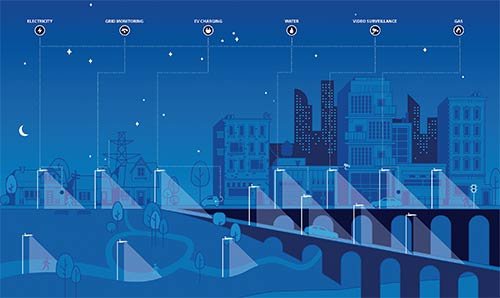Benefits of a Smart City
 Technology is rapidly moving away from single application networks to multi-application networks (smart grid / smart city).
Technology is rapidly moving away from single application networks to multi-application networks (smart grid / smart city).
The smart city scenario can provide many benefits like more accurate usage billing, improved access to time-of-use tariffs (to take advantage of off-peak rates for appliance usage and thermal storage), less reliance on field-reports to trigger maintenance from the system provider, shorter response times during system events or outages. See photo 3.
All this is leading towards a future of improved interaction with day-to-day technology (Smart Devices and the “Internet of Things”).
Smart Grid Connecting Approach
It is important to plan now so that the future of your street lighting infrastructure is compatible with the smart grid solutions as they develop. For example, procure future-proofed luminaires with dimming compatible receptacles (7-Pin), upgradeable components, and a wireless control network.
Case Study: Island of Aruba
A total of 12,000 luminaires were installed at an energy cost of $0.28/ kWh. The year one cost savings with LED conversion was 63%. When LED conversion was supplemented with adaptive controls capability the overall energy savings increased to 72%. [Energy Cost = $0.28/kWh, Dimming over a 12 hour night with 4 hours operation each at 100%, 75%, 50% power] The five- year savings were even more significant: 69% (without controls) and 75% (with controls).
While upgrading to LED lighting, the procurement strategy should be based on quality and total life-cycle cost. We have to specify upgradeable products to limit technology risk and allow for low cost upgrades as technology improves. It is also important to take into account the adjusted price, which is the price per warrantied year or energy savings.
 TrafficInfraTech Magazine Linking People Places & Progress
TrafficInfraTech Magazine Linking People Places & Progress